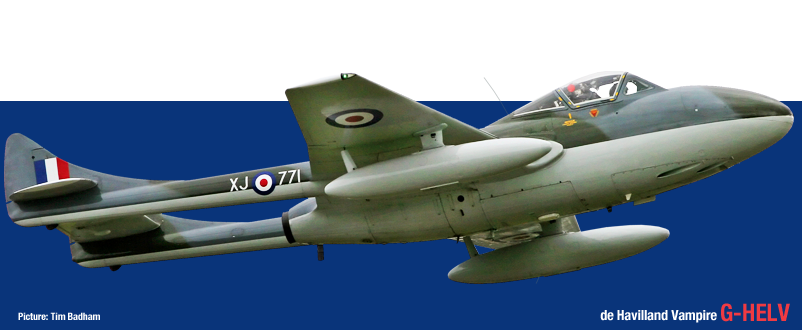
G-AMSV Returns to Coventry
An old friend returned to Coventry yesterday when G-AMSV, in her striking Indian Air force livery, landed here for extensive maintenance by our engineers. Sierra Victor was part of the Air Altantique fleet here for many years. She'll...
Baginton Air Pageant
The initial details for the Baginton Air Pageant are up on the website! As we don't have the space for a full-on air show attracting 20,000 or so people, we're aiming for low-key, themed days like this. A couple of thousand people,...
Newquay Pleasure flights
We promised we'd be back to fly in Cornwall, and here we are. We'll be heading south with a Rapide and Chipmunk to spend a week at Newquay from 25th July, with a further visit planned in August. The flights are bookable in the normal...
New Dakota Book
Geoff Jones just told me that his new book on the DC-3, released to celebrate the 80th anniversary of the Dak's appearance, is now available. The cover sports a lovely shot of G-ANAF, shot by Simon Westwood before her radome goiter was...
Nimrod Engine Run
We've just confirmed plans by NPT to run all four of the Nimrod's Rolls-Royce Speys on Saturday 9th May. We expect the thunder to start just after lunchtime. Come along and enjoy some audio power - and please dip into your pockets...


The deHavilland DH.100 Vampire was commissioned by the Royal Air Force during World War II, entering service just too late to see combat. This was the second jet fighter to enter RAF service (the Gloster Meteor being the first) and it continued to serve with front line RAF squadrons until 1955. It was then retained by the RAF as a jet trainer until 1966.
The first public appearance by a Vampire was to lead the Victory Day Parade Flypast over London on 8 June 1946. This is just one of many claims to fame by this nimble little fighter. It was also the first RAF aircraft to exceed 500mph, the first jet aircraft to land on an aircraft carrier and the first jet aircraft to fly across the Atlantic Ocean.
Almost 3,300 Vampires were built, with a quarter of them under licence in other countries. The design would be later modified to become the Venom. Surprisingly, the main fuselage ‘pod’ was constructed of plywood and this is one reason why the Vampire is such a rare aircraft today. Due to the challenges keeping these fragile aircraft aloft, it is thought less than ten are capable of flight now, including Classic Air Force’s Vampire.
The Swiss built T55 two seater trainer serves the Classic Air Force as an airshow exhibit and a capable jet trainer. As such, it is invaluable to our operation.

